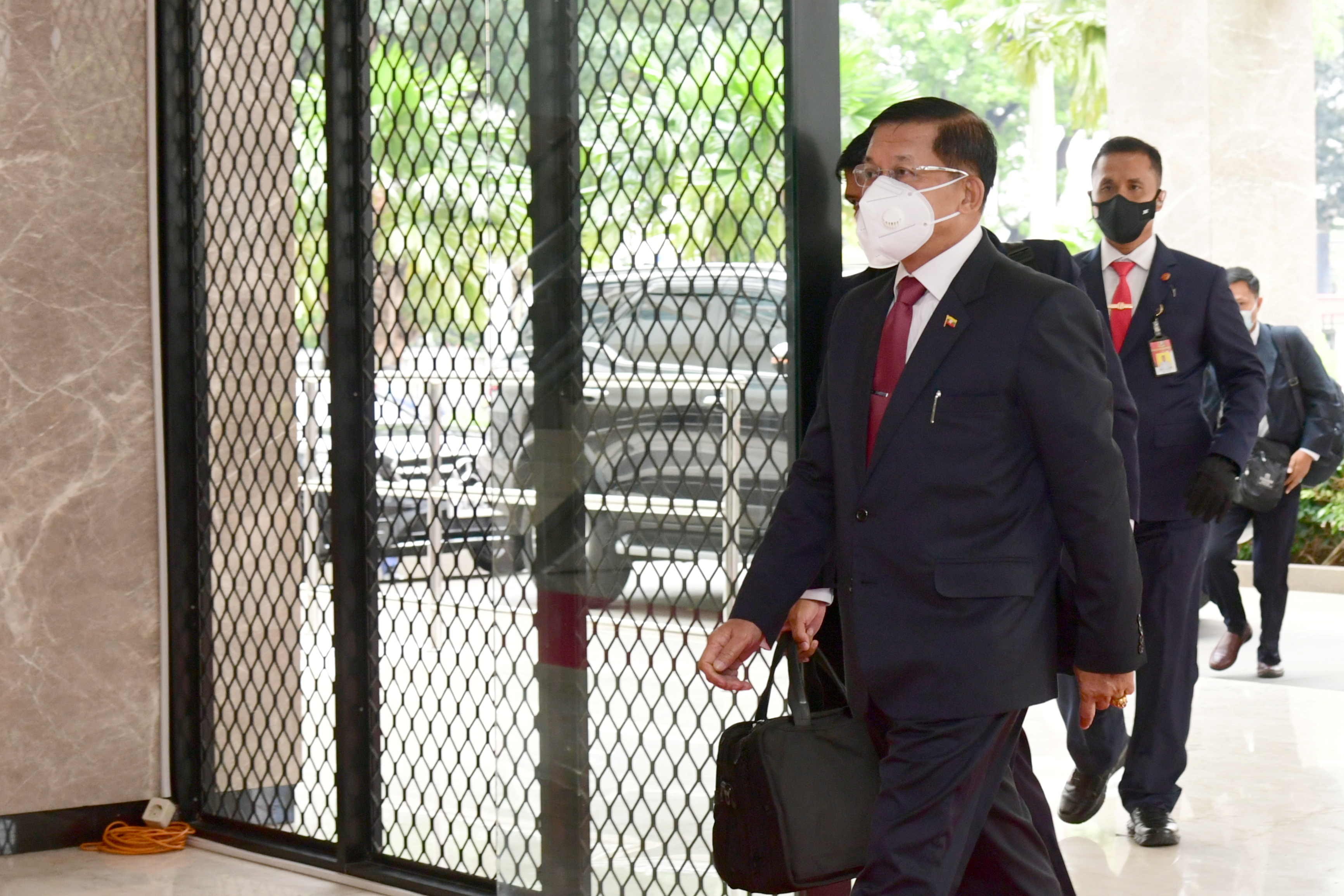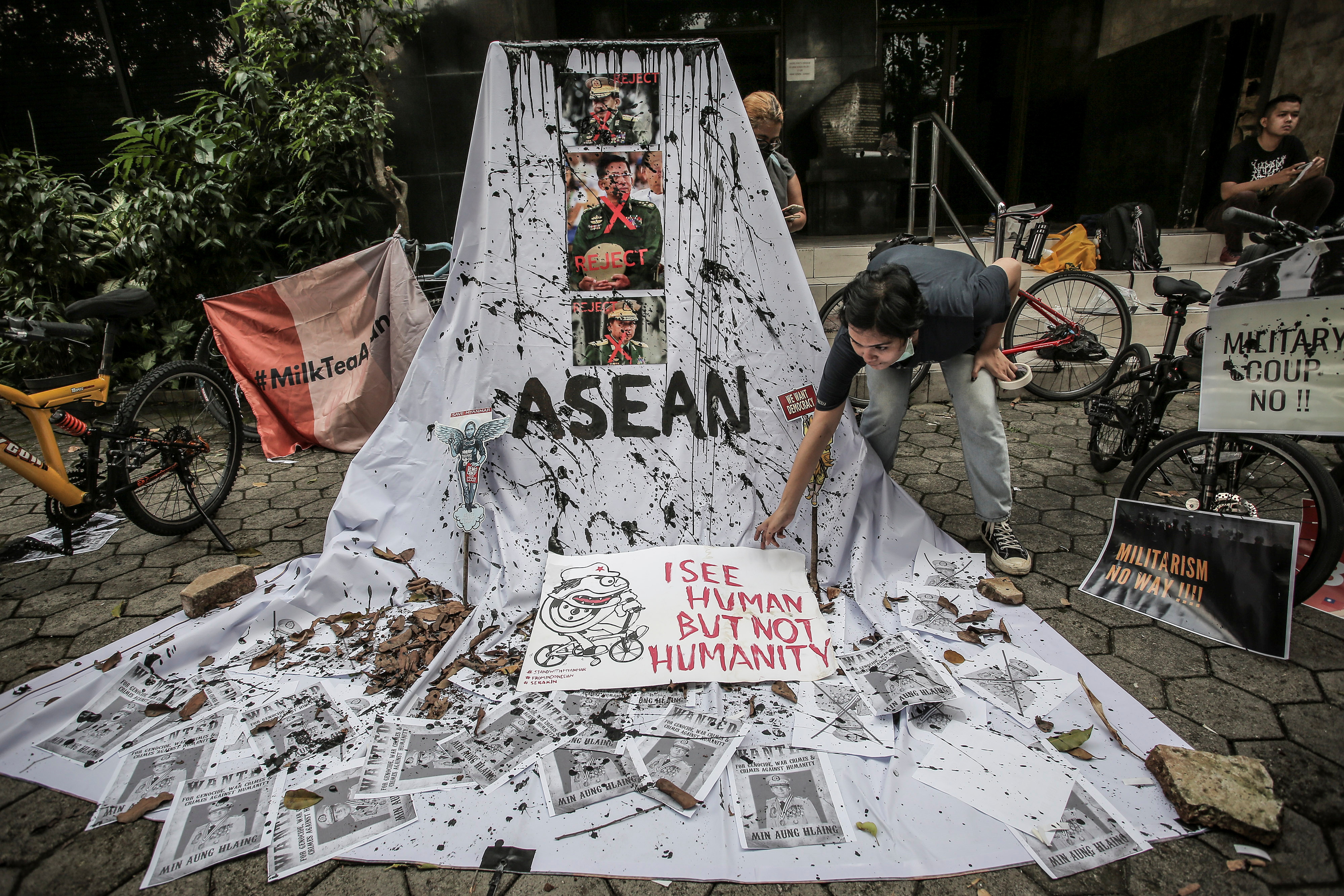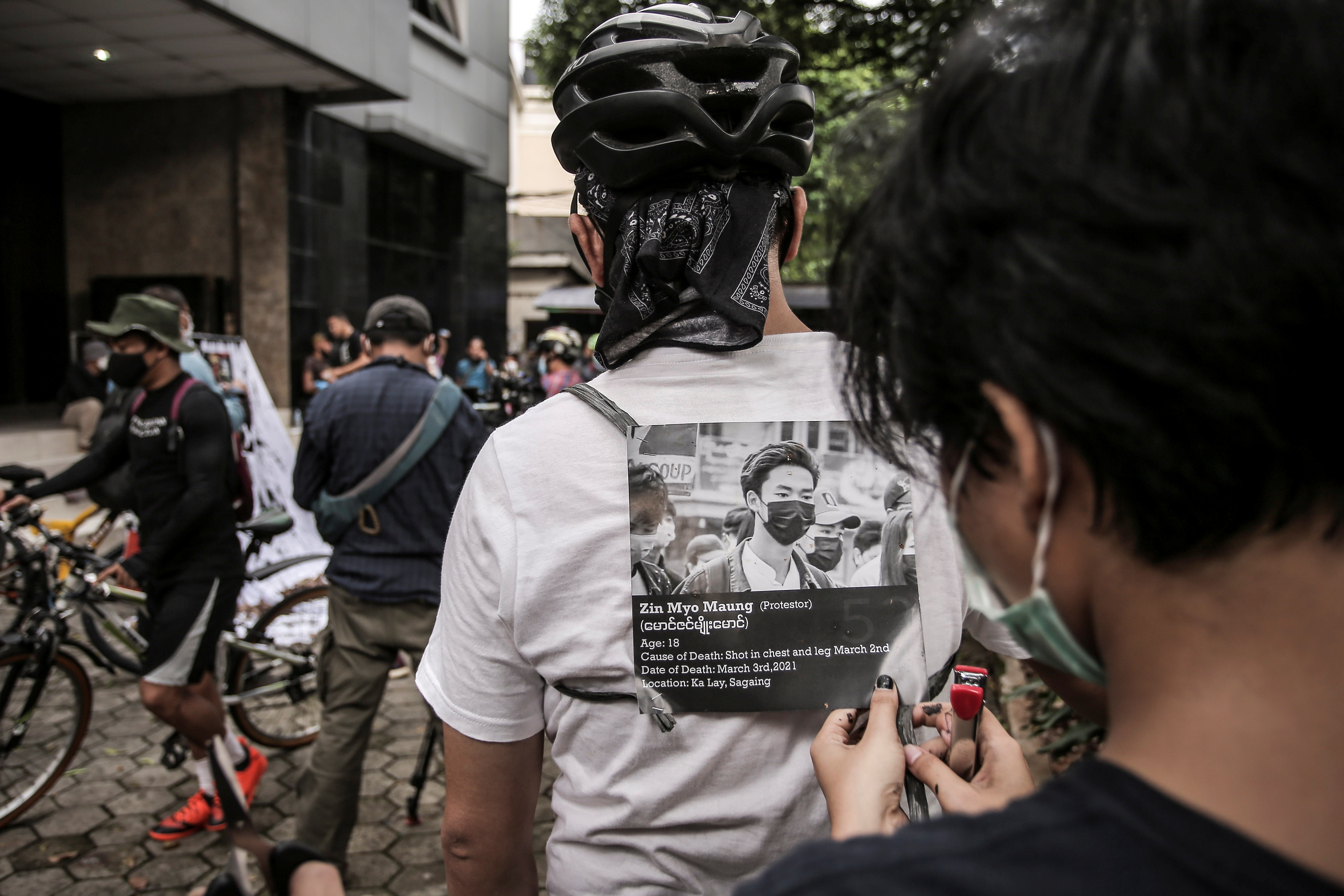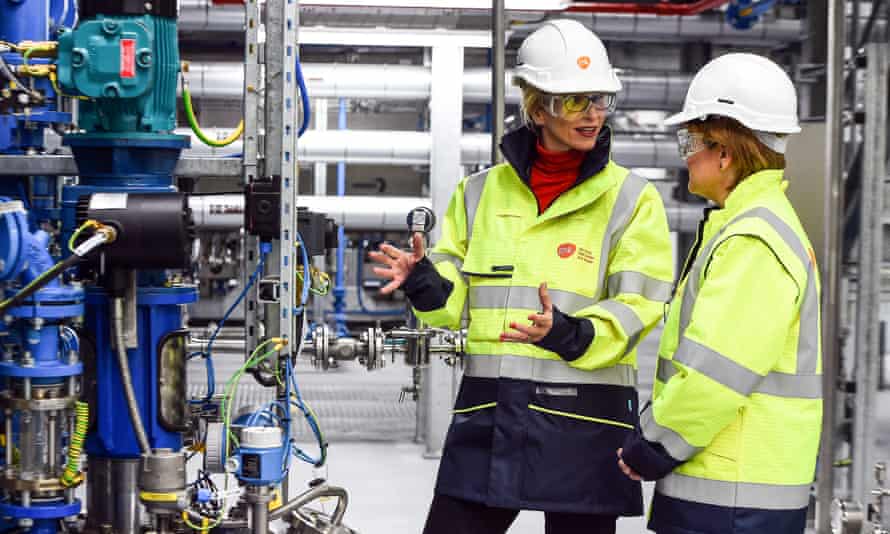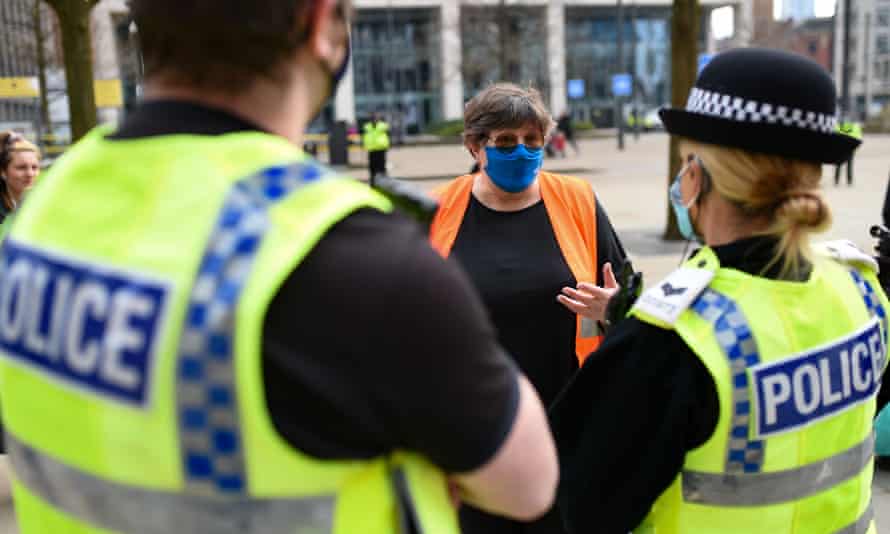By Qian Feng
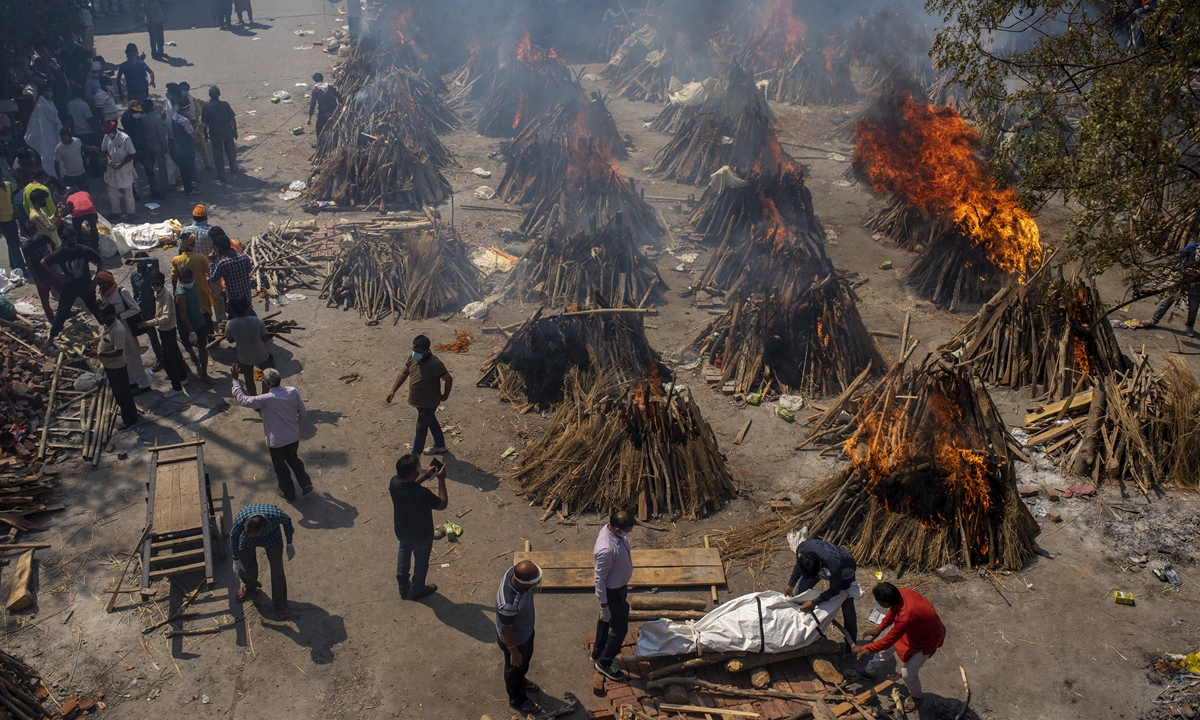
Multiple funeral pyres of COVID-19 victims burn at a site converted for mass cremations in New Delhi, India on Saturday. Indian authorities are scrambling to get medical oxygen to hospitals when the country reported a new global daily record of more than 346,000 infections for a third straight day. Photo: APThe US has refused India's request to ease exports for vaccine raw materials. Meanwhile, India's COVID-19 epidemic is getting into its "worst possible phase." By contrast, the US has celebrated its milestone of reaching the goal of 200 million shots. How ironic!
The US government has spiritually supported India in the epidemic fight in various occasions. US Secretary of State Antony Blinken tweeted on Sunday to show sympathy and support to the Indian people. He wrote, "Our hearts go out to the Indian people in the midst of the horrific COVID-19 outbreak. We are working closely with our partners in the Indian government, and we will rapidly deploy additional support to the people of India and India's health care heroes."
Nonetheless, as the US still faces challenges posed by COVID-19, it will continue to focus on meeting its domestic demands. Thus, in the near future it will be hard to see Washington give a substantial hand to other countries, including India, to fight the virus.
Countries like India should be aware that they are pawns to the US. They might be picked up when the US needs them, but then discarded like used tissue when they are not useful any more. The US has been attempting to bind India to its anti-China chariot. But when it is about support with practical moves, the US has stepped back with its commitment to take care of Americans "first and foremost." Hypocrisy of the US and the West has been exposed in this regard, together with their selfishness.
Some Indians have realized such hypocrisy. "If COVID-19 has taught us anything, it's that Western emphasis on human rights is one humungous farce," wrote K Bhattacharjee, an Indian author, at OpIndia media.
However, the US has attached special importance to India's strategic value as a leverage to suppress China. If India was weakened by the still wildly spreading COVID-19, it would obviously be less effective to the US' anti-China campaign. The US won't want to see this happen. So it is possible that Washington will reach out to New Delhi with some symbolic supports, including donations. In addition, the US-led Quad maybe has also disappointed India. At the "historic" Quad summit, the leaders of the US, Australia and Japan vowed to ramp up production of vaccines in India. This was done to counter China's vaccine distribution assistance to other countries and regions.
However, as India is more severely hit by the epidemic, both the US and Australia have issued only their vocal support. But Japan has remained silent so far. The Quad said it is committed to delivering up to 1 billion doses by the end of 2022 to address vaccine supply shortages across Southeast Asia and elsewhere. But the plan hasn't been carried out effectively. As a result, India will probably become reluctant when it comes to cooperating closely with its Quad partners.
When the US refused to help India with raw materials for vaccine, countries including China have expressed their good will to lend a hand. Actually, China has also capabilities to help its neighbor out. As a responsible major power, China clearly knows its international and regional responsibilities. It is willing to go through thick and thin together with its neighbors.
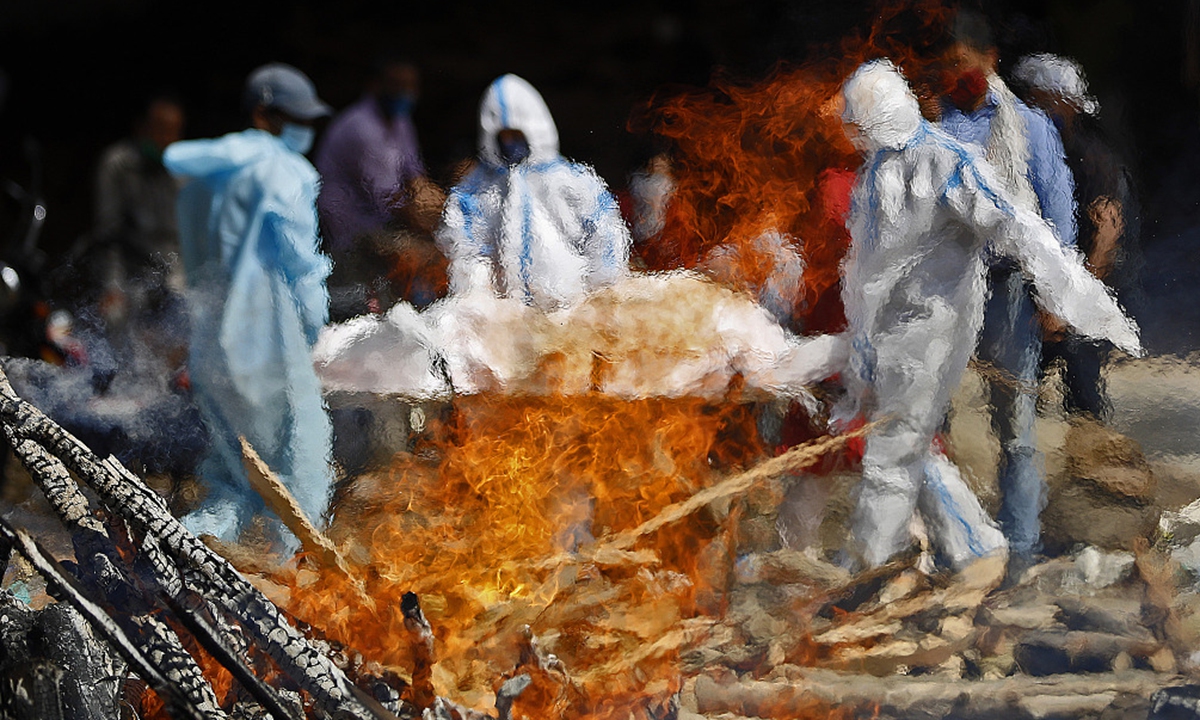
Photo:VCGNew Delhi hasn't responded to Beijing's olive branch. The Modi administration must be in a great hesitation. It desperately desires help from the international community as it is facing grave shortages of materials, including oxygen and personal protective equipment. Simultaneously, due to deteriorated relations with Beijing in recent years, New Delhi is restrained by domestic pressures from anti-China political forces.
What lesson can people draw from India's failure in getting a helping hand from the US? First, a big developing and emerging country as India should primarily focus on its own epidemic prevention to maintain its people's safety. This being the case, India should put aside all unrealistic diplomatic plans. India's attempts to earn influence by aiding others with COVID-19 vaccines go against not only Indian people's interests and epidemic prevention but also the country's future development.
Second, India should keep its strategic autonomy rather than tilting toward any side. India has been an upholder of autonomous development. But due to its geopolitical needs over the past few years, India has increasingly tilted toward the US and thus engaged in a game with China. But what India has been through has proven that the US and the Quad are not reliable.
It is believed that different voices from the international community will show that the real America does not care to help India right now as infections explode across the Asian country. India can perceive a very real America because of this.
The author is director of the research department at the National Strategy Institute at Tsinghua University. opinion@globaltimes.com.cn
By Zhang Hui

Multiple funeral pyres of COVID-19 victims burn at a site converted for mass cremations in New Delhi, India on Saturday. Indian authorities are scrambling to get medical oxygen to hospitals when the country reported a new global daily record of more than 346,000 infections for a third straight day. Photo: AP
As India suffers its worst humanitarian crisis amid the devastating second wave of COVID-19 with the fastest rise in new daily cases any country has experienced since the outbreak, the Chinese government and enterprises have made goodwill gestures by offering help or donating medical supplies despite sour bilateral ties.
Chinese analysts, who project India's daily new cases may surge to 500,000 in two weeks, called on India to put aside political biases to learn from China in improving testing ability and building makeshift hospitals.
India has been breaking the record of the world's highest daily surge in the past days with more than 346,000 new cases and 2,624 deaths reported in the past 24 hours.
A shortage of medical oxygen, hospital beds and other necessary drugs continued to plague more hospitals in India on Saturday. Several hospitals either stopped admitting new patients due to no oxygen or posting SOS messages for help.
Moolchand Hospital in New Delhi tweeted on Saturday, "Urgent SOS help. We have less than 2 hours of oxygen supply."
Chinese analysts predicted daily new cases in India may peak at 500,000 in the next two weeks, and it needs at least a month optimistically for India to control the second wave. The real numbers are much higher than recorded as many homeless people infected with the virus have not been included, analysts said.
The worsening coronavirus situation in India will also deal a heavy blow to its economy, as its economy may be back to the size it was 20 years ago, and is likely to affect the stability of South Asia, Hu Zhiyong, who has closely followed the coronavirus situation in India since a year ago, told the Global Times on Saturday.
While expressing sympathies to India, the Chinese Foreign Ministry for two consecutive days this week said China is ready to provide support and help according to India's needs, and China is in communication with India on this, a good gesture that Chinese analysts said was the "friendliest signal" China has sent to India recently.
Donations from Chinese companies are also on the way.
With demand for medical oxygen cylinders skyrocketing in India, Chinese smartphone maker Xiaomi on Thursday announced it will donate INR 3 Crores to procure more than 1,000 oxygen concentrators for hospitals across India.
The Global Times learned from a source close to the matter on Saturday that a Chinese logistics company plans to donate 300,000 KN95 face masks to India, and the source is contacting recipients in India. A Chinese motorcycle company has donated more than 200,000 masks to a hospital in Delhi, and a Chinese company in the textile industry has purchased a ventilator in China and is sending it to a hospital in India.
Wang Guangfa, a respiratory expert at Peking University First Hospital who shared China's epidemic control and prevention experience with many countries including India last year, told the Global Times on Saturday that with a large population, India's priority is to learn from China on strict prevention and control measures, including improving its testing ability to find more patients, and building field hospitals to quarantine and treat patients.
Wang said that these measures could effectively control the source of infection and cut the virus transmission route as China's experience showed that many patients were detected from testing.
Aside from providing medical supplies, China could help India with testing equipment, testing reagents, construction materials for building makeshift hospitals as well as technical support, Wang said.
A Chinese merchant in India told the Global Times on condition of anonymity that he's concerned Indian government may be reluctant to receive Chinese donations and help, and even if accepted, Indian politicians would not stop fanning the flames of anti-China sentiment for their political gain.
He said that Indian residents did not show any hatred toward Chinese in India, but it's those Indian politicians and media who incite nationalism.
The Times of India reported on Thursday that India was looking to import oxygen from countries in the Gulf and Singapore, but not China even if China said it is ready to help, as China was "not among the countries India was looking to source oxygen from."
India was excluding China's help, Hu said, noting that India should drop its ideological biases and put lives first.
India wants to move closer with Western countries led by the US. But Western countries are busy canceling diplomatic exchanges and suspending flights from India, and the US did not lift its restrictions of exports of vaccine raw materials that India urgently needs, Hu said.











